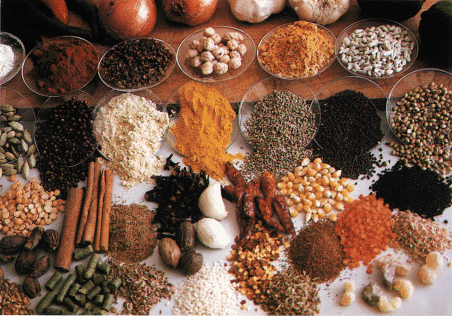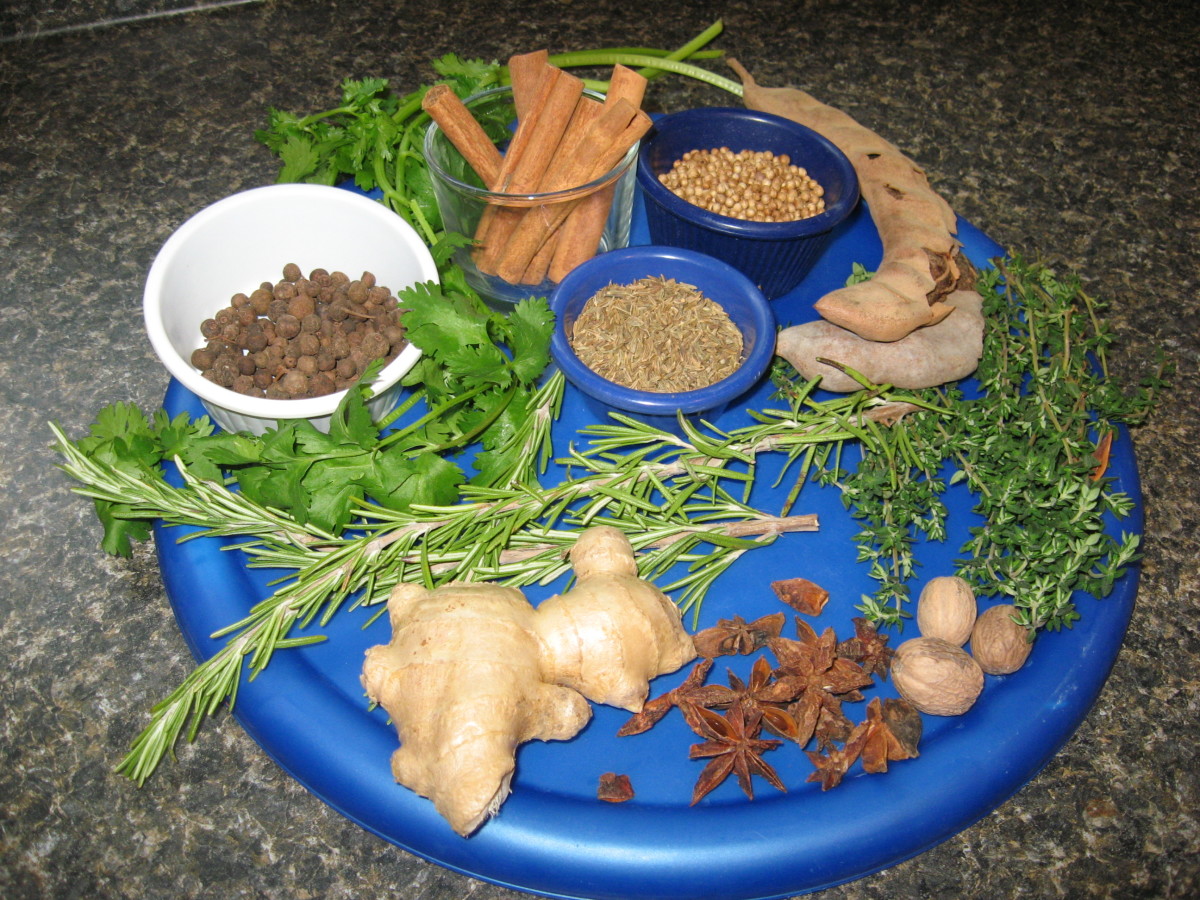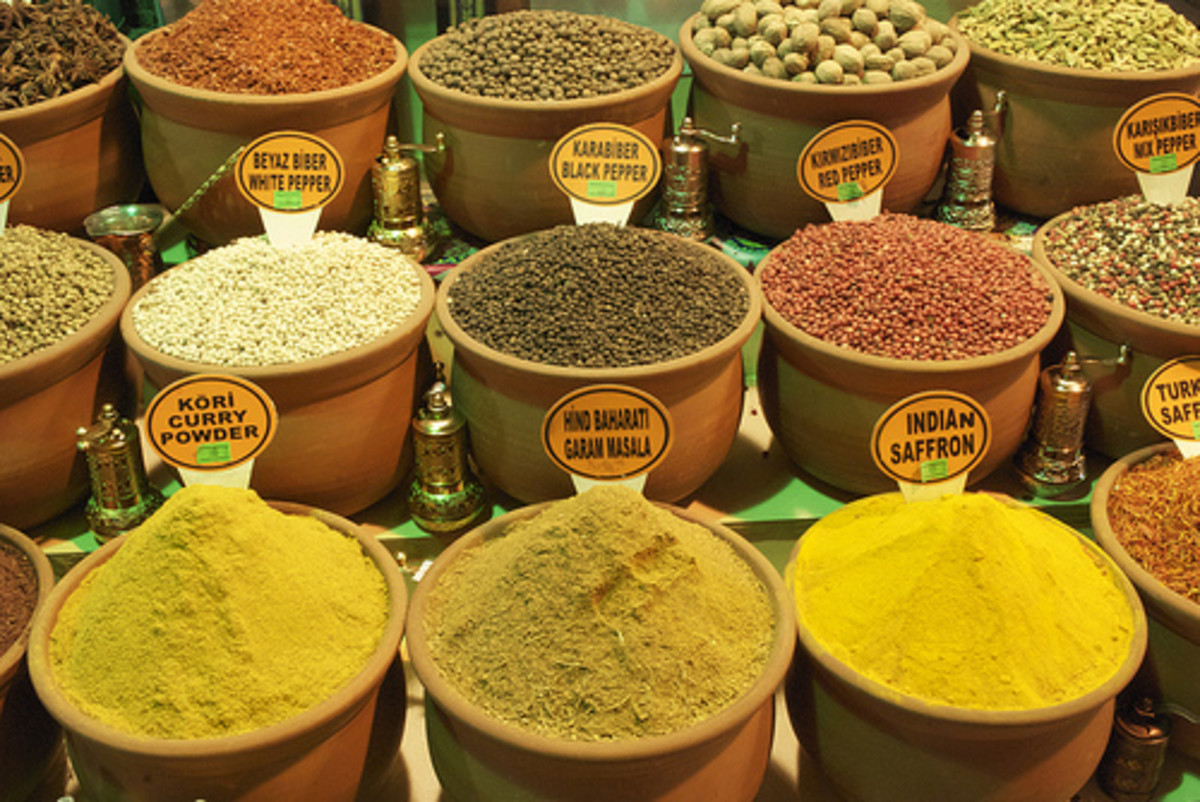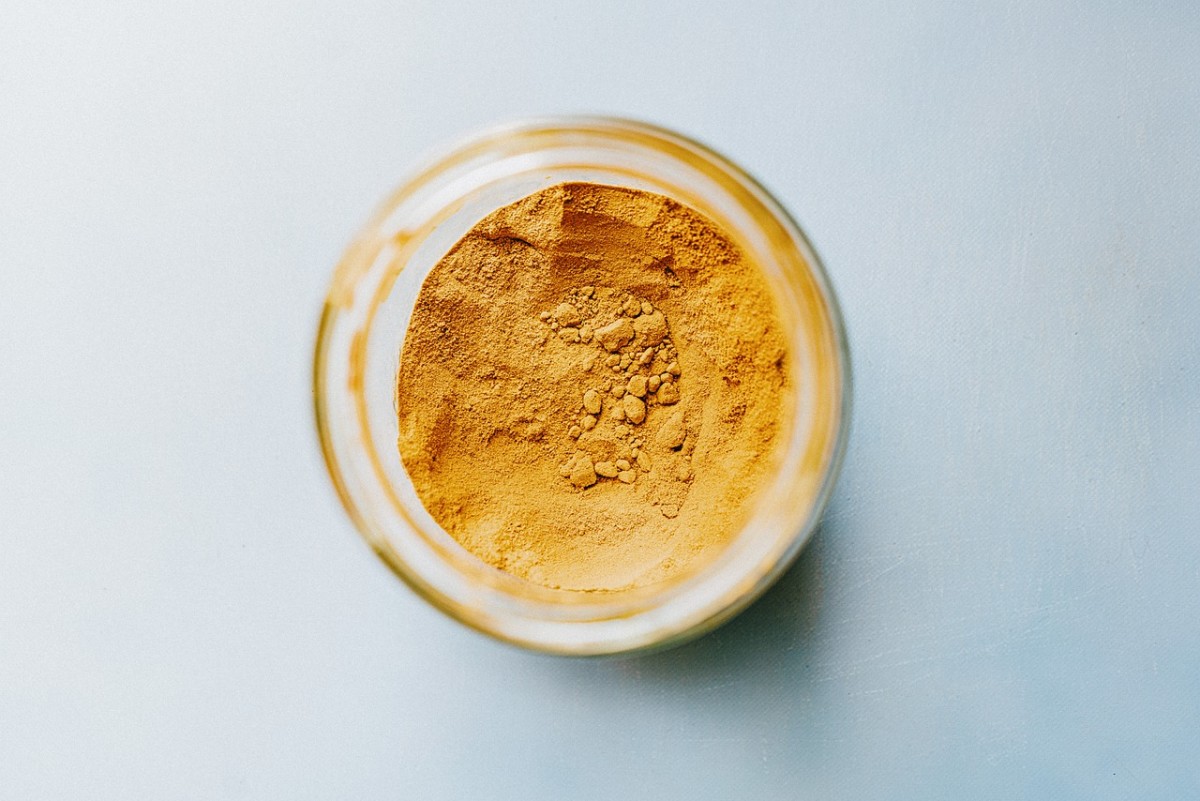The Aromas and Flavors of Herbs & Spices


Books on Herbs & Spices
June 3 (Thursday) Cooking Ingredients: Herbs & Spices or Extracts & Flavoring
As the famous Simon & Garfunkel sings in Scarborough Fair: “If you’re going to Scarborough fair, Parsley, Sage, Rosemary and Thyme, Remember me to the one who lives there, She once was a true love of mine.”
Can you name the more popular herbs and spices that you buy in the market or you grow at home?
To help us identify herbs, it is generally leafy, aromatic plants, grown in temperate climates. It is often add as aromatic flavorings which add appeal or zest to food. To name a few: garlic, chives, dill, caraway, parsley, horseradish, bay, basil, marjoram, anise, rosemary, sage, thyme and more.
Spices are more often bark of trees, seeds or buds. Mustard, capers, paprika, chilli, cayenne, cinnamon, nutmeg, poppy seed, sesame, pepper, vanilla, ginger…to name a few.
History of Herbs & Spices
During olden times, a young Rumanian girl’s signal that she wishes to marry a boy when she gave a sprig of sweet basil to him. She stands accepted or rejected depending on whether or not he takes her gift of love.
Herbs had a value and significance which was partly magical. Spices, too, have always been considered as valuable articles, particularly of exchange and trade like precious metals, pearls and jewelry. When the famous Portuguese explorer Fernando Magallanes searched for the famed Spice Island of Moluccas, he found the place later or his men after discovering Philippines (Las Islas Filipinas). So, I may conclude that herbs and spices are so important during their period.
Healing properties of herbs and spices are also noted by Travel Man. In medieval times, garlic, for example, was widely recognized as an effective ‘vampire’ repellent and used to treat leprosy. Even today, almost all officers and crew on board ship carried some dried or capsuled herbs for personal healing purposes. Our Rumanian fitter used to drink chamomile flower tea other than the usual famous brand like Lipton tea. The Greek chief engineer used to pour powdered black pepper over a cup of hot water to cure his cold. Dried oregano leaves were also boiled for the same purpose of healing stomach pain for our Greek port captain.
Spices were used for embalming, for incense, scents, ointments, medicines and cosmetics. Just after the birth of Jesus Christ, spices and herbs began to be widely used for cooking or culinary purposes.
What Culinary Experts Found Out
Herbs and spices can be used most effectively in the microwave oven. They can enhance the sometimes pale appearance of meats, poultry dishes and baked goods, or they can be processed and dried for later use.
A very good idea is to prepare and store your own herb and spice combinations. A good example is the combination of pepper, salt and oregano or just the first two. This is good when you are barbecuing.
In summertime, you can buy prepared pots of growing herbs in the market or you can grow your own. If wintertime is coming, you can sniff off sprigs and dry them under the heat of the sun or just in microwave. A marinated, savory and spicy leg of lamb with home-made mint jelly will be enjoyed by your family even in the winter of January.
Herb oils and vinegars are delicious in salads and marinades, and can easily enhance the taste of meats by brushing them before and during the microwave cooking period. Creating unique combinations of herb butter and dried spice mixtures will add piquancy or zest to any vegetable dish. You can add the mixture of olive oil, salt, pepper and oregano over the vegetable combination for your vegetable briam.
Jellies can be made from array of herbs, providing unusual and different garnishes for everyday meat, fish or poultry recipes. Ordinary bread crusts or French stick cubes take on an added appeal when you prepare your own herbed croutons.
It’s a good idea to rub the herds between your fingers before you add them to the dish. This will bruise them and release the fragrant oils. Taste the food during the cooking period and adjust. Don’t overdo seasonings. When doubling a recipe, it’s not necessary to double the seasonings. Taste first, then adjust.
Learn that new flavors produce new dishes. Experiment with tried and true favorites. Change the flavors with different herb and spice mixtures as you become familiar with their effects of taste.
As flavor-enhancers, herbs and spices, if properly chosen, can work wonders with everything from mincemeat to marinades.
Allspice: whole - best for soups, stews, pot roasts, pickled beets, pickles; ground cookies, plum pudding, sweet potatoes, squash
Caraway seed: ideal for sauerkraut, cabbage, corn bread, potatoes, baked or stewed apples, meat marinades, chowders, cabbage rolls, pork
Cardamom: good for coffee cakes, salad dressing, fruit salad and pies, pickling spice, custards, rice pudding, hot-spiced wines
Celery seed: for pickling, canapés, dips, breads and rolls, pastries, egg dishes, meat loaf, hamburger, tuna or salmon salads, sandwich spreads, stuffing
Celery flakes: roast duck or goose, potpie fillings, soups, sauces
Chili powder: Mexican dishes such as chili con carne, enchiladas and tamales; sauces - cocktail, cream, tomato, barbecue; corn and cornmeal dishes, cheese and chicken dishes, guacamole, Spanish rice, bean casseroles
Cloves: whole - used to stud ham, onions, glazed pork or beef, spiced tongue, pot roast, sauces, drinks; ground - spice cakes, gingerbread, cookies, frostings, meringues, mincemeat, chili sauce, green vegetables
Fennel seed: fish, egg dishes, seafood salads, spaghetti sauce, sautéed mushrooms, oyster dishes, baked or stewed apples.
Don’t ever forget these things about herbs and spices
Spices are often derived from fruit or flower parts, seeds, buds, bark or roots of plants (usually of tropical origin) are almost always in dried from. The exception is ginger.
As a rule of thumb, ¼ teaspoon (1 mL) if dried, 1 teaspoon (5 mL) if fresh.
Dried and fresh herbs are produced from the stems, leaves and sometime flowers (of temperate origin). The fresh variety provides a more subtle taste, while dried versions give a muich intense flavor.
As a rule of thumb, one teaspoon of dried herbs equals one tablespoon of fresh.
Note: If kept in a sealed container, dried herbs can last six months to a year.. They should be stored away from sunlight and heat. Fresh herbs must be used immediately. Spices, if whole, can last up to three years.







